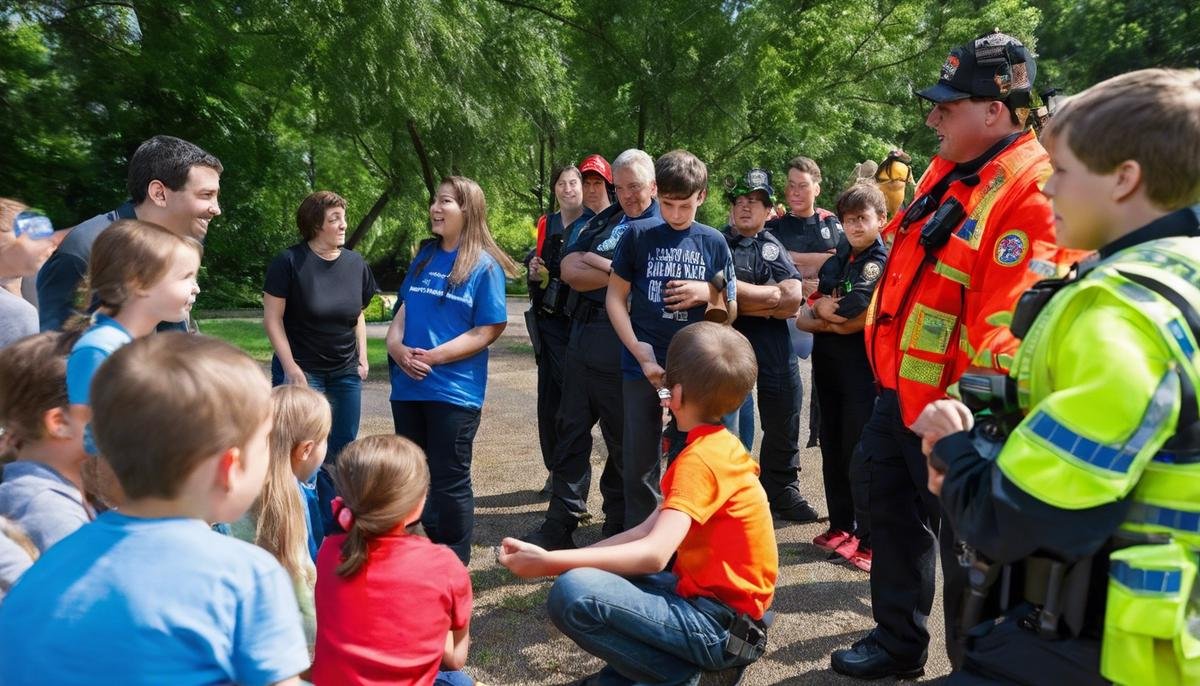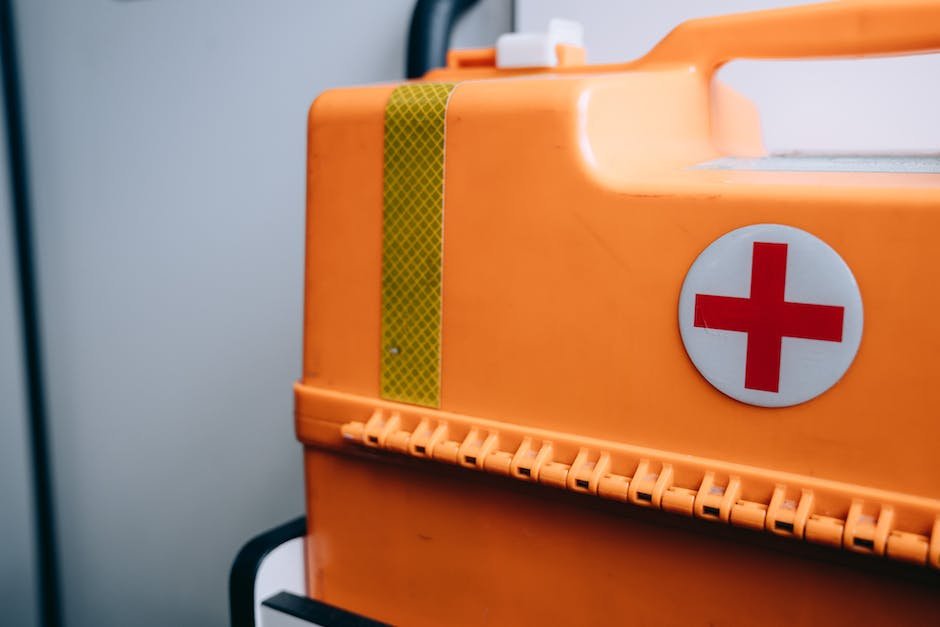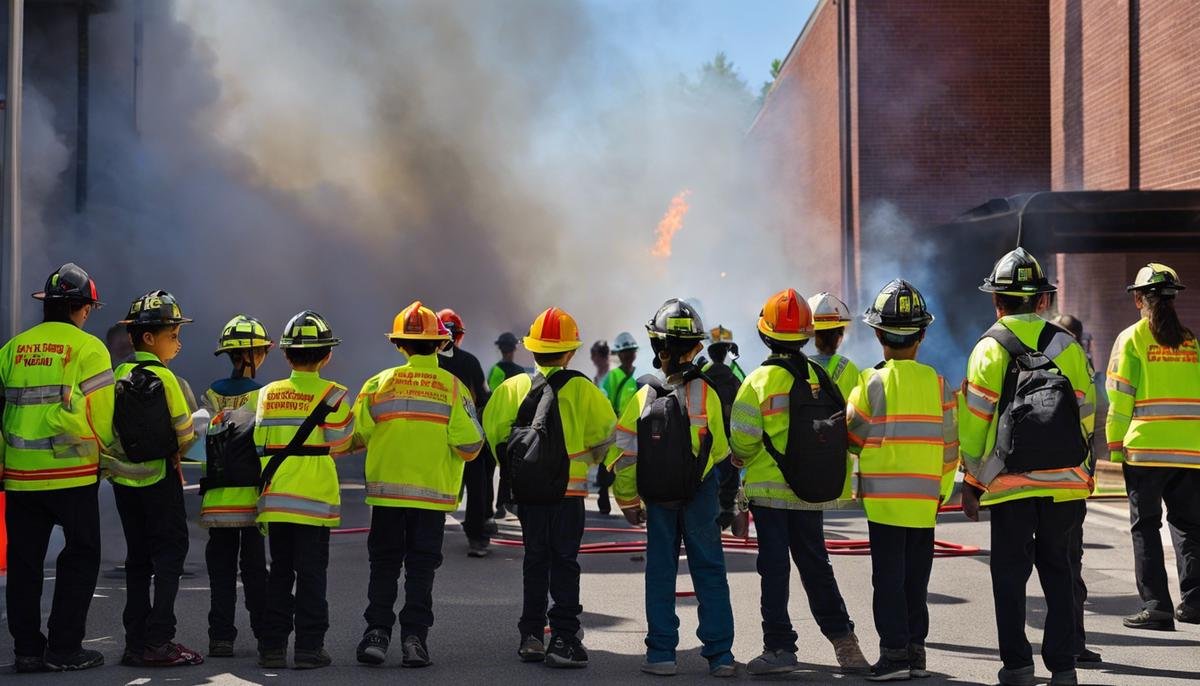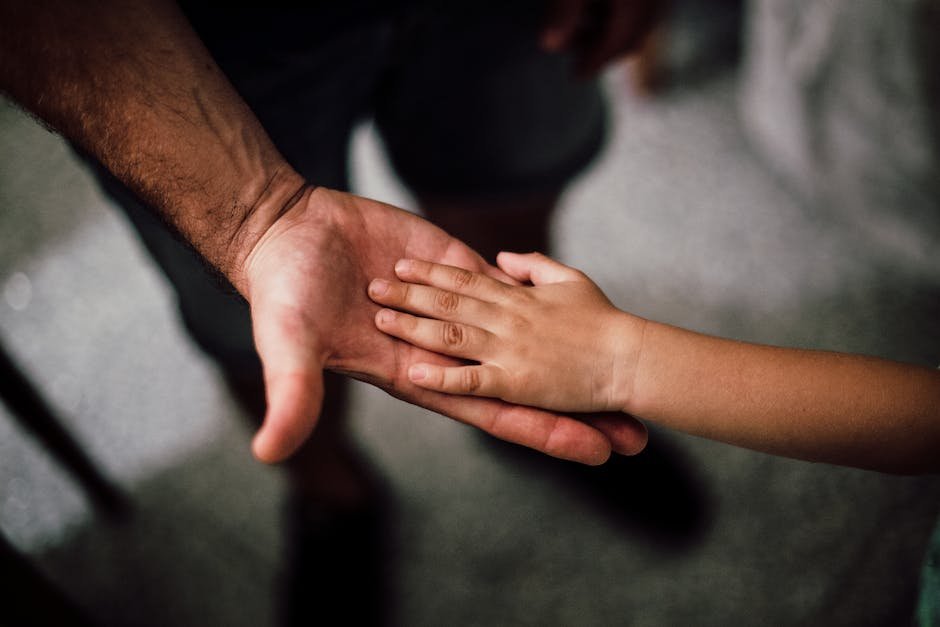
Emergencies can be challenging for anyone, but for a child with autism, they present a set of complex challenges that require thoughtful preparation and understanding. Children on the autism spectrum may experience heightened distress due to sensory sensitivities, face communication hurdles, and have an acute need for routine amid chaos. With empathy and foresight, we can craft effective strategies to support their unique needs. By delving into the nuances of emergency planning tailored for children with autism, we aim to empower not only these children but also their caretakers, educators, and local authorities to ensure a supportive and coordinated response when the unpredictable strikes.
Understanding Autism in Emergencies
Navigating Emergencies with Children on the Autism Spectrum: Insights for Families
Emergencies are challenging for everyone, but for families with children on the autism spectrum, these situations can be uniquely complicated. It’s crucial to understand the distinct needs of these children to help them navigate the unpredictability and stress that emergencies often bring.
Firstly, children with autism may struggle with the sudden change in routine that emergencies necessitate. Routine provides comfort and security, and when that’s disrupted, it can trigger anxiety or meltdowns. Planning ahead can make a huge difference. This could involve creating “emergency routine” plans that your child is familiar with and can rely on when things go awry.
Sensory sensitivities are also heightened during emergencies. The blare of a fire alarm or the chaos of an evacuation can be overwhelming. Keeping sensory tools on hand, like noise-cancelling headphones or a favorite tactile object, can provide much-needed comfort for your child.
Communication challenges can escalate during high-stress situations. A child with autism might have trouble expressing their fears or understanding instructions during an emergency. It’s vital to have a communication plan tailored to your child’s needs, whether that’s through picture cards, apps, or other assistive technologies that they are familiar with.
Safety concerns are another major aspect. In emergencies, children on the spectrum might wander or inadvertently place themselves in dangerous situations. It’s important to ensure safety measures are in place, such as ID bracelets with relevant information, and to practice emergency drills in a calm and controlled manner.
Lastly, emotional support is paramount. Keeping a calm demeanor and providing reassurance can help a child with autism process what’s happening. A familiar comfort item or a quiet space can serve as a refuge amidst the turmoil.
In preparing for and dealing with emergencies, it’s important to collaborate with first responders, educators, and support networks to create a cohesive support system for children on the autism spectrum. Getting to know families with similar experiences can also provide invaluable support and share strategies that have worked for others.
Remember, every child with autism is different, and it’s essential to tailor any approach to fit their unique needs. By understanding these challenges and planning ahead, we can help ensure the safety and well-being of children on the autism spectrum during emergencies.

Creating an Autism-Friendly Emergency Kit
Crafting an Autism-Friendly Emergency Kit: Must-Have Items for Your Child
Let’s dive right into what you’re here for – building that all-important emergency kit for a child with autism. It’s about peace of mind and preparation.
Familiar FavoritesImagine the chaos of an emergency – it’s unsettling for anyone, let alone for little ones who thrive on predictability. By including items familiar to your child, you provide a sense of security amidst uncertainty. Pack their favorite small toys, books, or comfort objects. Recognizing and holding onto these treasures can offer immense comfort when everything else seems foreign.
Customized IdentificationIn any emergency, easy identification is key – especially for a child who may not readily communicate their needs. A well-fitted ID bracelet with your child’s name, diagnosis, and emergency contact information is a start, but consider also a recent photograph and a personal information card detailing their communication abilities, triggers, and calming strategies.
Tailored First-AidWhile a standard first-aid kit is essential, it might not be enough. Does your child have particular medical needs or allergies? Ensure to pack any prescribed medications, EpiPens, or special medical supplies alongside instructions for use. Keep these in a waterproof container, and don’t forget to check expiry dates regularly.
Calming ToolsSensory overload can be overwhelming during emergencies. A pair of noise-canceling headphones, a weighted blanket, or even textured toys can make a world of difference to a child experiencing sensory sensitivity. Keep these tools at the ready; they might just be the key to curtailing a crisis.
Snacks and HydrationComfort can often be found in the simplest of things – like snacks and drinks. Pack non-perishable, allergen-friendly snacks that your child likes and a spill-proof water bottle. Familiar flavors can be a welcome distraction and help keep their energy up when it’s needed the most.
Visual Aids and Communication ToolsSince emergencies can disrupt verbal communication, having visual aids like a picture exchange system or an electronic tablet with a communication app can help your child express their needs. Include clear instructions on how these tools can be used by others to support your child.
Emergency DrillsKnowledge is empowering. A well-practiced emergency plan gives both you and your child confidence. Including a simple, visual step-by-step guide on what to do during different emergencies can reduce anxiety and provide clear instructions during high-stress situations.
By including these tailored items in your emergency kit, you’re not just preparing for the unexpected – you’re providing a sanctuary of familiarity and security for your child with autism in times of crisis. It’s not just about having the right supplies; it’s about creating a portable environment of comfort that can anchor them, regardless of the uncertainties that emergencies can bring.
Preparation is more than an action – it’s an ongoing commitment to your child’s well-being and safety, and these thoughtful inclusions underline that devotion.

Communication Strategies During Emergencies
Navigating Emergency Scenarios with Effective Communication Strategies for Children with Autism
In the fabric of family life, weaving a tapestry of safety becomes a delicate task when raising children with autism, especially during the unforeseen tremors of emergencies. With existing support systems having cemented the groundwork, the focus must now shift to fine-tuning communication to navigate these critical junctures with compassion and efficiency.
For children with autism, the world can sometimes feel overwhelming. So, when emergencies strike, it’s essential to extend beyond the sphere of general protocols to ensure their specific communication needs are met. A little forethought and an understanding heart can make a world of difference. Here’s to embracing the challenge and transforming it into an opportunity for empowerment through effective strategies.
Comfort in consistency is a beacon of calm amid storms. To bolster this solace, incorporate cherished and comforting items into emergency kits. Perhaps a beloved stuffed animal or a familiar blanket that doubles as a security anchor can provide an invaluable sense of stability when the world around is unpredictable.
Next, let’s consider identification beyond the conventional. Simple ID bracelets or informational cards detailing a child’s communication preferences, allergens, and emergency contacts are indispensable. These tools speak volumes when children might struggle to articulate their needs. It’s not just about who they are, but how the world can understand them better.
Medical emergencies demand tailored responses. A well-stocked first-aid kit is non-negotiable, yes, but when customized with the child’s specific medications or medical supplies, including clear instructions, it becomes a lifeline personalized to their unique constitution.
Let’s not overlook the power of calming tools. Sensory-sensitive items like noise-canceling headphones to insulate from the auditory chaos or a weighted blanket for grounding reassurance offer a haven for those who perceive the world more intensely.
Remember, emergencies can skew routines, and something as fundamental as snacks and hydration can fall by the wayside. Packing non-perishable favorites and a spill-proof water bottle can comfort and maintain energy levels when schedules dissipate.
Amidst the cacophony, visual aids stand as silent but potent communicators. Picture exchange systems or intuitive communication apps for non-verbal children provide clarity when words are lost in the shuffle. These tools are bridges over chasms of miscommunication in times of distress.
And finally, there’s no better ally than preparation. Regularly practicing emergency drills tailored to children’s understanding can demystify the process. Step-by-step visual guides for different emergency scenarios can engrain a sense of familiarity, so when the alarm sounds, it’s not a siren of anxiety but a signal of preparedness.
When the unexpected comes knocking, it’s these thoughtful, customized approaches that pave the way for smoother communication with children with autism. It’s about transforming every potential chaos into a choreographed dance of safety and empathy. Together, with each tailored strategy, families can foster a domain of security where every child, regardless of their needs, knows they’re heard and protected.

Emergency Response Training and Practice
Let’s dive into a couple more life-saving strategies to ensure that our precious kiddos with autism can navigate emergency situations with as much grace and confidence as possible. Emergencies are all about thinking on your feet, but when you have a child with special needs, a little bit of prep can make a world of difference.
Role-Playing for Realistic Practicing
There’s nothing quite like a good old role-play to walk through potential scenarios. In a calm and controlled environment, you can create simulations of emergencies, such as a fire drill or an unexpected exit from the home. It’s all about making these practices a routine, but not rote — each one should involve clear instructions and accommodate your child’s level of understanding and comfort. Role-playing can help translate abstract concepts into actionable steps for your kiddo.
Developing a ‘Help Card’
While we may beautifully assume everyone will understand our children’s unique behaviors, in an emergency, folks might not readily pick up on a child’s autism. Creating a ‘Help Card’ with bullet points about how to best approach and assist your child can be invaluable for anyone trying to offer help. These cards can outline triggers, effective communication methods, and ways to soothe and ensure safety.
Stress Management Strategies
Let’s talk about stress—because even the calmest cucumber in the group can feel the squeeze during an emergency. Teaching your child methods to self-calm amidst chaos is an essential skill. This might be deep breathing techniques or a specific mantra or phrase they can repeat. We know that practice is essential, so integrating these techniques into daily life can help make them second nature when they’re most needed.
Establishing a ‘Safe Spot’
A designated safe spot, be it a family meeting point or a room where a child can retreat to when the sensory overload feels too overwhelming, can bring immense comfort. Make sure this is something that’s well-known and consistently available. Perhaps it’s Grandma’s house or a neighbor’s doorstep; no matter the location, familiarity will be a beacon of safety.
Alerting Devices and Safety Alarms
Especially for children who are prone to bolting or wandering, specialized alert devices can offer parents peace of mind. There are numerous gadgets out there that can be worn as watches or on a belt loop that signal parents or guardians when a child has moved beyond a pre-set boundary. In an emergency, this tech can really become a superhero sidekick.
Emergencies are by no means a walk in the park, but they can be managed smoothly when armed with the right strategies. Keeping clear, concise, and considerate of our child’s unique needs can empower them to handle disruptions with resilience. And remember, a calm parent often leads to a calm child. So, here’s to being the anchors amidst any storm for our extraordinary children—they deserve no less.

Collaboration with Emergency Services
Nurturing Confidence and Security: A Family Guide for Helping Children with Autism Navigate Emergencies
In times of crisis, every second counts, especially when supporting children with autism. Beyond established routines and individualized communication strategies, families can champion their child’s well-being with a mix of innovative and practical measures. Let’s dive into some thoughtful ways families can work seamlessly with emergency services to ensure a safe and reassuring environment for their unique child.
One invaluable technique is involving children with autism in role-playing scenarios. This not only prepares them for unexpected situations but also empowers them to understand their role during such events. Create scenarios that mimic potential emergencies and guide your child on how to respond. This can be a fun and engaging way to learn, using their favorite superheroes or story characters as part of the action, helping to make the practice sessions less intimidating.
Developing a ‘Help Card’ tailored for your child can be a game changer. This small, easily accessible card should include critical information such as the child’s name, diagnosis, effective communication methods, and calming techniques. It can also list medical information and emergency contacts. Make sure your child carries this card at all times, and that they understand its purpose—peace of mind for parent and child alike.
Managing stress is another key aspect to consider. Equip your family with stress management strategies to use in emergencies, such as deep breathing techniques or visualizations that focus on peaceful images. Maintaining calm is not only beneficial for the child but also crucial for the adults managing the situation. When parents stay composed, it can greatly reduce the child’s anxiety.
Establishing a ‘Safe Spot’, whether at home or within a familiar environment like school, can provide your child a sense of security during chaotic situations. It should be a well-known location where they can retreat to feel sheltered and less overwhelmed. This designated area can have their favorite items and be marked clearly in your emergency plan.
In an ever-connected world, alerting devices and safety alarms should not be overlooked. These can range from medical alert bracelets to GPS trackers that can be attached to clothing or bags. These devices can alert authorities or family members immediately if the child is in a situation where they need assistance, helping prevent dangerous situations like wandering.
All these steps emphasize collaboration with emergency services. Introducing your child to local first responders in a calm, controlled environment can build trust and familiarity, two elements that are priceless during unforeseen events. The goal is to create a bridge of understanding and preparedness between the family, the child, and those who are there to help in emergencies.
In conclusion, while unforeseen circumstances are a part of life, a family’s proactive approach can vastly improve the experience for children with autism. By exploring and implementing these measures, families not only prepare their children for emergencies but also cultivate in them a sense of confidence to face the world, no matter the challenges it may bring. Together, we can create a safer, more understanding environment for our precious ones to grow and thrive.

Empowering children with autism to navigate the tumult of emergency situations is not simply an act of preparation; it symbolizes a commitment to inclusivity and respect for their distinctive experiences. While unpredictability can never be fully eradicated, our diligence in creating robust emergency strategies for these children cultivates an environment of safety and trust. The dedication of families, communities, and emergency responders to understand and implement these strategies signals a compassionate society in which every member is recognized, valued, and protected, even more so when the winds of challenge blow hardest.




